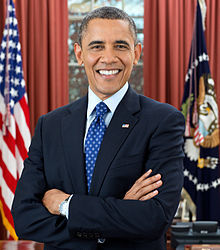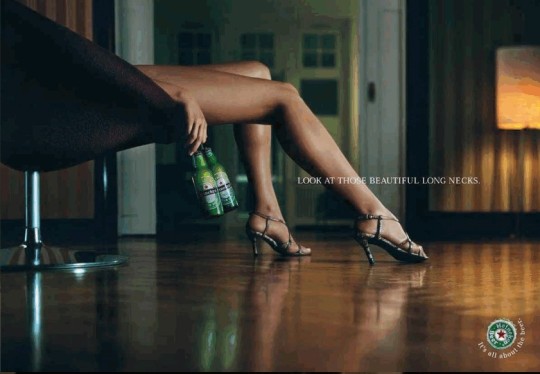Text
Leveraging your prototype to win the deal; lessons from training 100 entrepreneurs
After working with entrepreneurs in the course of 3 accelerators and countless workshops, I find it fascinating to read Elsbach article and to put some facts and data into what use to be my intuition.
It was very common to work with a founder, preparing together for important VC pitch or demo day, and to see them trying to be a “showrunner”. They try to learn how to speak with Charisma and sense of confidence, just like they see on TV and like we are taught everywhere:
* Speak loud, and change your tone according to the message
* Tell a story, make it personal
* Be confident, but not koki
* Look into every person’s eyes.
*feel the blank*
Sometimes, it worked, with practice, coaching and more practice, some founders become a good showrunner, and that was awesome. With the technicality skills and passion for their product, being able to demonstrate confident, really set them for success.
However, in most cases, it was not the case.
Most pitchers didn't have a lot of experience or passion a public speaking, and they felt freaked out just by the thought of speaking to a crowd or to investors.
This pressure combined with the desire to pitch “like Obama” - put them in an impossible stress that is unproductive or helpful.
My solution for this was to focus the accelerators pitching workshops, untraditionally, about “finding your voice” rather than “learning the right way to pitch”
With Barack Obama, Stephen Hawking and Sarah Silverman as examples to leaders that people listen to - I demonstrated that different people can be successful communicators building on their own traits and strengths.



For many tech entrepreneurs, that similar to Screenwriters - just wanted to focus on their creation and not about the delivery - it was much easier to identify with the “artist” (we called it “techi”) or even the Neophyte and to build a good pitch experience for the catchers. An experience that provided the audience with a sense of authenticity and space to join in developing the idea.
Cultivating your personal tone, still require a lot of practice and training, but I found that people are experiencing much less stress when they are building on their strengths and not trying to reinvent their public personalities.
As I was reading Elsbach article, I couldn't stop thinking about all the founders who failed to raise money and acquire customers, because they failed to associate with one of the prototypes as they tried to play the wrong one.
1 note
·
View note
Text
Burberry - rethinking aspirational
Burberry is an aspirational brand, as such - it has to make sure that what it represent as the in-group, is still aspirational by its consumers.
Rethinking Cultural and Social Capital
In a way, Burberry's affiliation with the English Aristocracy is like a national - affiliate branding. There is the risk that political and social changes will hinder this aspirational image.
Buying a Burberry bag is an investment of financial capital in order to enjoy social and cultural dividends, and if the aspirational image will be damaged, this investment will not make sense.
In order to strengthen the foundation of the brand, I suggest in looking into two options: adding a sustainable message to the brand values and to push functionality to places where luxury fashion has rarely made an appearance yet.
Go green or go home
Addition pillar of social awareness will speak to the importance of creating sustainable fashion - including responsible sourcing, having transparent supply chain and being responsible for the well-being of everyone involved. This will help people feel goof about the investment in Burberry's items in a time where there are many social messages flying in the sphere. Focusing on sustainable business practices is also a generally great idea, helping reducing reputation risks, attract conscious customers and motivate employees
I would focus on environmental and not social values for 2 reasons:
1. A social mission might be come across as patronizing. I can already imagine clinical responses to a social campaign:

2. Environmental messaging can be consistent in visuals with some of the legacy advertising of top models in the outdoor
Your clothes should work as hard as you do
Burberry pride itself for having items that are both fashionable and functional. The iconic photo shoot in the outdoor implies that Burberry's customers can count on the brand to perform well and not just be pretty.
In the 90’s - the benchmark for functionality were brandless t-shirt and sweatpants, that people use to wear while at home. But today, as brands like Lululemon and Ministry has challenged the notion that comfortable and fashionable are not mutually exclusives there is an opportunity to keep pushing comfortable up the prestige latter from on your sofa only (No brand) -> to the Gym (Lululemon) -> to the office (Ministry of Supply) - > to the parties and the runaways (???).
Climbing of comfortable in the latter of prestige:
Couch potato clothes

Comfortable workout clothes


Comfortable office clothes


Comfortable luxury fashion - very limited offering!

0 notes
Text
Inside and out the SIA brand
SIA ability to sustain customer-centric value and make money can be explained by different factors: their operation design, the assets investment choices and to my opinion - first and foremost, their investments in the employees
Those factors allow an end-to-end “on brand” experience for the SIA passengers, that in turn allow SIA to charge higher prices and enjoy loyalty, especially with their premium customers.
Leveraging employees as drivers for brand equity
Often when we think about the brand, we think it is only the external message for the company’s customers. It is clear that one of the company's major competitive advantages and the driver for their customer-centered brand is their employees, and it seems that SIA’s brand inside the organization and toward potential employees, is a powerful tool in this regard. We can view their employee's centric approach with respect to their recruiting, Training and retaining (performance measurement and incentives)
Recruiting process obviously serve to scan and select the right employees. In this case, though, it also serves as a strong signaling tool to communicate expectation with potential candidates and to build the prestige of the position (if you had to go so much to get in, it probably only “high-quality employees”). The rigorous selection process is well know and help to establish the company's brand as an employer, supporting the positive self-selection of people that apply for the position.
The extensive Training introduces a great opportunity to train employees to deliver the intended experience to customers. The major investment that SIA make in employees translate later into the high performance, the team ability to make quick decisions and the sense of ownership, leading to behavior such the one in the Paris baggage handlers strike in the 90’s
Performance management and incentives SIA employees performance measurement tool, allow the company to identify the top performer and to acknowledge them for their exceptional work - this create a system in which the stronger performer get motivated and are less likely to leave the company, and there is a peer pressure to perform and get better
Additional operation decision such as young fleet, employees ratios and the culture of measurement and improvement allow SIA to deliver on their promise, to charge a premium and to enjoy loyalty. With response to the crisis, I would argue that they should make the flatbed investments in order to keep the consistency of their brand, which is to provide the best care in the airline industry
#2017mitsloanbrandinga
0 notes
Text
Memories from serving beers and Lévi-Strauss’s binary opposits
"Can I have the Maxican beer” (random customer, Frishman Beach, Summer 2002)
In class, Julia mentioned that a brand is a story- I could not agree more. I would also add that there is a promise attached to the brand. For corona and Heineken - there are clear two different stories, with a very different setting, personas, and possible promises: the promise for wild fun VS the right, cultures choice.
Medelo is fully committed to the Mexican vacation narrative, and I can share that it worked so well, that I still remember, while waiting tables in Tel Aviv beach when I was 17 (Yes, it's legal to serve drinks at this age in Israel), customers ordered Corona and referred to Mexico as part of the ordering process (“Just like in Mexico”... “this is my weekend / beach / vacation beer”) and I, who never been in Mexico nor knew where other beers were made off, knew to bring Corona when someone ordered “Mexican beer” and knew to add lime on top (just like in Cocktail). Heineken's promise is extremely different. It's about quality, status, it's about “what’s right” which allude to more than taste or subjective, it's almost a fact that they are presenting.
WARNING!
Social Science analysis attempt, not necessarily relevant to branding, not necessarily correct comparison!
Anthropologist Claude Lévi-Strauss suggested that some underlying patterns of toughs are applicable to all cultures on earth. If I remember correctly from Anthropology 101, he claimed that there are 7 pairs of opposites that every culture will identify. The only two I remember is Male-Female and Culture - Nature. I find it fascinating to think about the Heineken claim to be the “right” choice, such a strong (almost scientific-alike) claim.
This really brings to mind other “cultural” superiority claims by organizations and societies that knew what is the right choice. I see Corona and Heineken, exemplifying the Culture - Nature binary pair nicely In messaging and in images. For Heineken, almost always outdoor, represented by a well dressed (cultured) person (or pair of legs) while Cocona stays with the wilder setting, often with no people at all - just the natural(ish) beach,


Heineken's Systemic vulnerability
Heineken's dismissal of Corona’s ability to compete effectively was their number one vulnerability.
While there are other issues to bear in mind, such as the shift in market demographics and their somewhat outdated message, this issue is the most threatening to my opinion.
There are so many ways to strategize and compete, but if a company can not identify a threat, it has no chance of protecting their market share effectively.
Any competitive response takes a lot of time to deploy: Deciding what data to collect, collect the data, analyze,, craft a gameplay, get buy-in from different stakeholders, improve and execute. For this reason, assessing new competitors and threats in time, allows a company to be effective and quick to respond.
Protection should be tactical but also systematically, I would have think about setting in place system that can make sure that Heineken has their finger on the pulse (or having someone else on the pulse - like consultant or Nielsen’s team), to make sure that they don't lose critical when the next threat arise.
0 notes
Photo


With GetRid new, innovative and colorful car fleet, you can always be sure that we will be there on time to pickup your item
0 notes